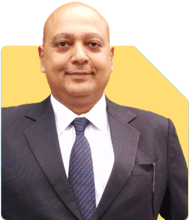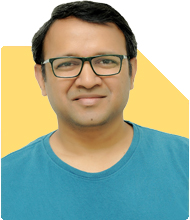I am 50 now and I want to retire at the age of 56 and my monthly expenditure is 40000PM and i have two daughters presently studying in 10th and 11th class. below mentioned financial situation please suggest me way forward on how can manage to retire or better my situation I have a 1Cr in Bank FD 12 lacs inequity ( invested 8lacs in 2021) PF as of today its accumulated to 25 lacs i am doing SIP worth rs6000 from2011 in different funds which is worth around 15 lacs now recently from feb2024 I stared doing 50000 thousands monthly SIP just last month i invested 12 lacs in hybrid mutual funds I had a house loan which is cleared now and besides this i have medical insurance which i pay 54000 for the complete family Per anum and Term insurance for which i pay 51000 PA
Ans: You are 50 years old, with a goal to retire at 56. Your monthly expenditure is Rs 40,000, and you have two daughters currently studying in 10th and 11th standards, who will require financial support for their education.
Your current financial assets include:
Rs 1 crore in Bank FD
Rs 12 lakhs in equity (invested Rs 8 lakhs in 2021)
Rs 25 lakhs accumulated in PF
Rs 15 lakhs in SIPs (since 2011)
Rs 50,000 monthly SIP (started from February 2024)
Rs 12 lakhs invested in hybrid mutual funds recently
Medical insurance costing Rs 54,000 PA for your family
Term insurance with an annual premium of Rs 51,000
House loan already cleared
I appreciate the strong foundation you have built with substantial savings and clear financial goals. Let's explore the way forward to optimise your retirement strategy and secure your financial future.
Step 1: Assessing Your Monthly Needs After Retirement
You need Rs 40,000 per month for your current expenses. However, this amount will likely increase due to inflation over the next six years until retirement. Let’s assume an inflation rate of 6%, which is typical in India. This means your monthly expenditure may rise to around Rs 57,000-60,000 by the time you retire.
Since you aim to retire in 6 years, the goal will be to create a financial plan that allows you to cover these rising expenses comfortably after retirement. We also need to consider the potential education expenses for your daughters in the near future, which will add another layer to your financial planning.
Step 2: Evaluating Your Current Investments
Bank FD (Rs 1 crore): While FDs offer safety, they have low returns. In the long run, they barely beat inflation. You should look at moving part of this into more growth-oriented options, like mutual funds, that can give you inflation-beating returns.
Equity Investments (Rs 12 lakhs): The equity market is an essential part of your portfolio, but given that you have invested Rs 8 lakhs in 2021, the returns may be volatile in the short term. However, staying invested in good-quality actively managed mutual funds can yield higher returns over time. Equity exposure is crucial to grow your wealth, especially given the inflationary pressures.
PF (Rs 25 lakhs): Provident Fund is a long-term wealth-building instrument with the benefit of compounding. It provides a decent rate of return and safety. This will form a significant part of your retirement corpus. You should continue contributing to this.
SIPs (Rs 15 lakhs and Rs 50,000/month): Your SIPs are excellent long-term wealth builders. Since you are already committed to Rs 50,000 monthly SIPs, you are on the right path to generating good returns. SIPs in actively managed equity mutual funds will help you stay ahead of inflation over time.
Hybrid Mutual Fund (Rs 12 lakhs): Hybrid funds offer a balanced mix of equity and debt, providing growth and stability. They can be useful as you approach retirement, but their equity exposure should be closely monitored.
Step 3: Optimising Insurance
Medical Insurance (Rs 54,000/year): You have medical insurance in place, which is essential for covering health-related risks. Ensure that the coverage is sufficient for your entire family. Given the rising healthcare costs, consider reviewing the sum assured and increasing it if needed.
Term Insurance (Rs 51,000/year): Term insurance is a cost-effective way to secure your family in case of unforeseen events. It’s good to have this in place. You may not need it post-retirement, so review it closer to retirement age.
Step 4: Prioritising Your Daughters' Education
Your daughters will soon enter college, and their higher education will be a significant financial commitment. It’s wise to set aside a portion of your investments to meet these expenses. Given their ages (10th and 11th standard), you can expect to incur these costs within the next 1-3 years. Consider earmarking part of your Bank FD or hybrid mutual fund investment for their education.
The Rs 1 crore FD could be partially redirected towards a safer option, like debt mutual funds or hybrid funds, to provide liquidity for education expenses without sacrificing growth entirely.
Step 5: Managing Post-Retirement Income
To ensure a steady flow of income post-retirement, let’s look at how your current portfolio can be structured to meet your monthly needs:
Systematic Withdrawal Plan (SWP): Once you retire, you can set up a Systematic Withdrawal Plan (SWP) from your mutual fund investments to provide a regular income. This way, you can withdraw a fixed amount every month, while the remaining capital stays invested and continues to grow.
Balanced Portfolio: As you approach retirement, you should gradually reduce exposure to high-risk equity and shift to a balanced portfolio. A mix of 40% equity and 60% debt will give you stability and growth, ensuring that you meet your monthly expenses while still preserving your capital.
Continue with PF and SIP Contributions: Your Provident Fund and SIPs should remain untouched until retirement. Both provide long-term growth and tax benefits. Continue your SIPs as planned, and consider increasing the amount when possible to accelerate your retirement corpus.
Step 6: Plan for Rising Medical Costs
As you age, healthcare costs will likely increase. Ensure that your medical insurance coverage is adequate. Review the current policy and look for options to increase the coverage if needed. A good health insurance policy will prevent you from dipping into your retirement savings for medical emergencies.
Step 7: Tax-Efficient Withdrawal Strategy
Capital Gains Tax: When you withdraw from mutual funds, remember that equity mutual funds attract capital gains tax. Long-term capital gains (LTCG) above Rs 1.25 lakh are taxed at 12.5%. Short-term capital gains (STCG) are taxed at 20%. Plan your withdrawals strategically to minimise tax outgo.
Debt Fund Withdrawals: If you hold any debt funds, remember that both LTCG and STCG are taxed according to your income tax slab. Use these funds carefully to manage your tax liabilities post-retirement.
Step 8: Setting Up an Emergency Fund
It’s essential to keep some money aside as an emergency fund. This should cover at least 6-12 months of your monthly expenses. Since you have substantial assets, you can allocate part of your Bank FD towards this. The emergency fund should be liquid and easily accessible in case of unforeseen expenses.
Step 9: Reassess Your Risk Profile
At 50, your risk tolerance may be lower than when you were younger. However, to maintain your lifestyle after retirement, some equity exposure is necessary to beat inflation. Work on balancing your portfolio so that it reflects your need for both growth and stability. Actively managed funds, as opposed to index funds, will give you more flexibility and potentially higher returns.
Final Insights
You have built a strong financial base and are well on your way to a comfortable retirement. However, a few strategic adjustments will help optimise your portfolio and secure your financial future:
Increase your equity exposure slightly while balancing it with debt to ensure growth and stability.
Plan for your daughters’ education by earmarking some of your FD or hybrid fund investments.
Consider SWP for post-retirement income, and set up a tax-efficient withdrawal strategy.
Review your health insurance coverage to ensure it meets your future needs.
Stay disciplined with your SIPs and continue contributing towards your PF to build a robust retirement corpus.
By carefully managing your existing assets and planning ahead for both education and retirement, you can achieve financial independence and enjoy a secure post-retirement life.
Best Regards,
K. Ramalingam, MBA, CFP,
Chief Financial Planner,
www.holisticinvestment.in
https://www.youtube.com/@HolisticInvestment






















